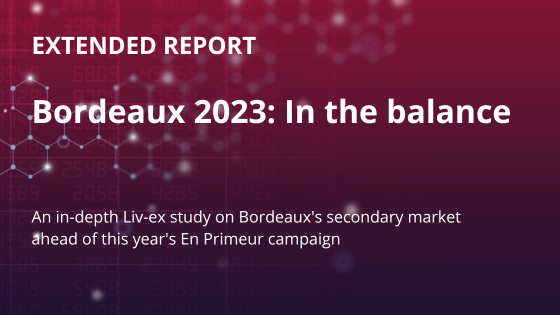The 2013 En Primeur campaign may be over for the reds, but the last week has produced a couple of final surprises from Sauternes. Yquem has announced that it will not be releasing its 2013 (voted the wine of the vintage by Liv-ex members), while Fargues has released at €120 per bottle ex-negociant, making it the most expensive vintage on the market since the 1989. In a letter to negociants, Alexandre de Lur Saluces of Fargues – formerly of Yquem – has justified his reasons for the price: defiance of the market’s general pricing of Sauternes in what was a good year for the white and sweet wines.
In his letter to negociants, Alexandre de Lur Saluces states that Sauternes prices are back to the same levels of 15 years ago: Liv-ex data (below) shows Sauternes has risen just 8% since December 2003. It has vastly underperformed compared to the rest of Bordeaux, with the next weakest index, the Left Bank 200, rising 101% in that time.
Perhaps more people should be taking note of what Sauternes has to offer. The chart below compares scores and prices for the five First Growth Sauternes in the Liv-ex Sauternes 50 Index with the five red Bordeaux First Growths. Prices for the latter are, on average, five times more expensive. Scores are roughly the same. Margaux 2005 – a legendary vintage for the reds – has 98 points from Parker and a market price of £5,280. Suduiraut 2001 – a legendary vintage for Sauternes – has 98 points from Parker and a market price of £680.
Those eschewing the 2013 vintage on grounds of its high price and average quality would be unfair to group the sweet whites in with the reds. 2013 was a good vintage for Sauternes, and thus offers potential value against back vintages. Climens 2013, shown below, was rated 94-96 by Neal Martin, putting it potentially higher than 2002, 2003, 2008, 2010 and 2012 – and it is cheaper than all of them. It is also 44% cheaper than the 96 point 2011.
Sauternes producers are evidently a little tired of the status quo, and no wonder. High production costs are not reflected in the price, in contrast to many of the red Bordeaux chateaux owners who kept prices high with their 2013s to cover costs. Fargues’ decision to base its 2013 price on quality rather than any other external factor was certainly a brave one. It remains to be seen whether it is the right one.
Sauternes sees limited activity on the secondary market, partly due to its low production levels but also because it is drunk less frequently than red Bordeaux. It also gets no favours from the owners. LVMH uses the same strategy for Yquem as it does for Cheval Blanc, pricing the wine as it would a luxury brand, regardless of vintage. Notably, since LVMH took over from Saluces (in 2004), Yquem vintages have been released on average at €390 per bottle ex-negociant. In the eight vintages previously (1998-2004), the average release price was €162. Meanwhile Rieussec is often linked with Lafite on release, causing it to be offloaded unceremoniously onto the secondary market.
So how will Sauternes gain traction in the market? Perhaps the big producers need to stop treating it like a second-class citizen, and focus efforts as a group on marketing it. Fargues’ price is a protest against the status quo, but ultimately it is the consumer that needs to be won round if sentiments on Sauternes are going to change.








